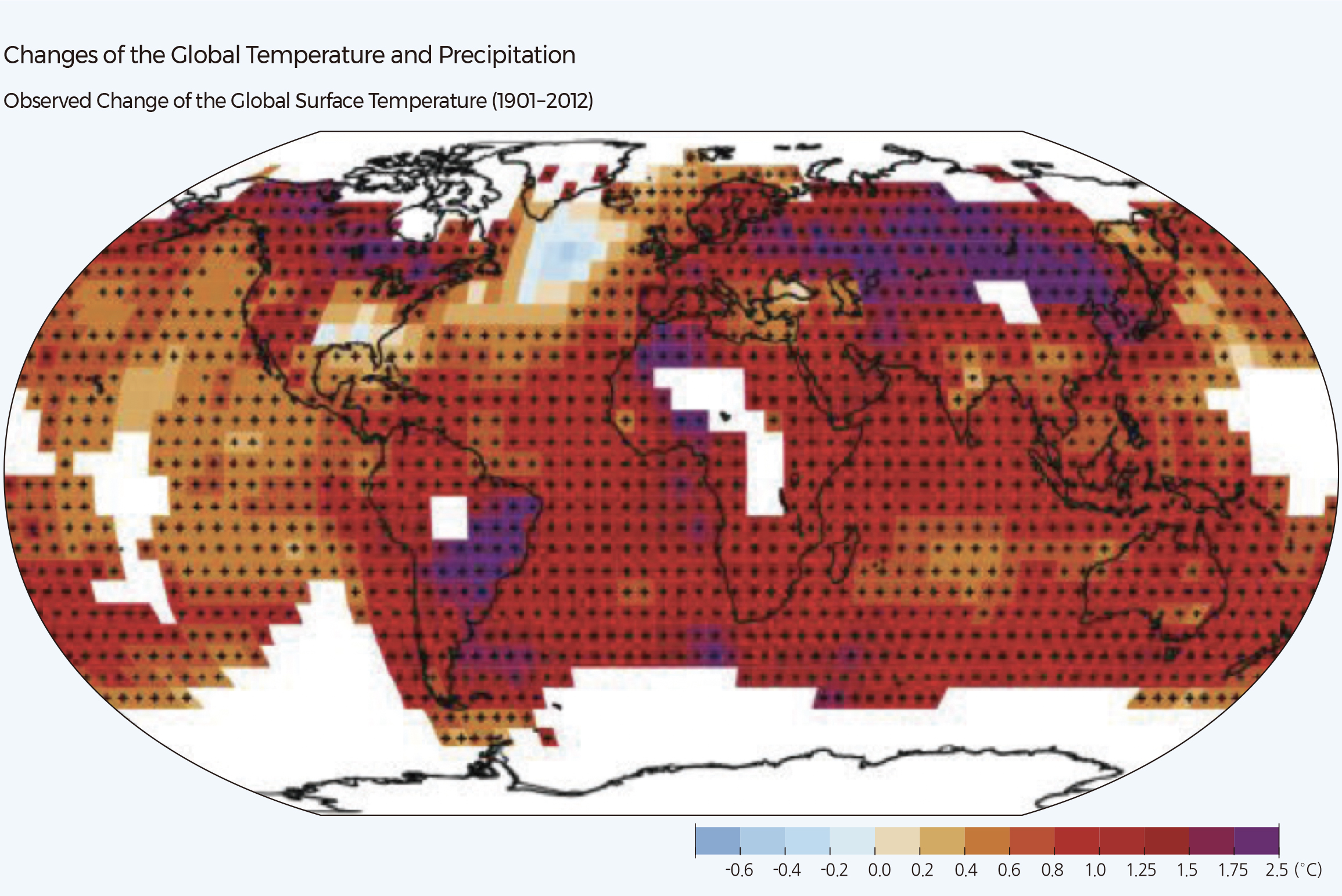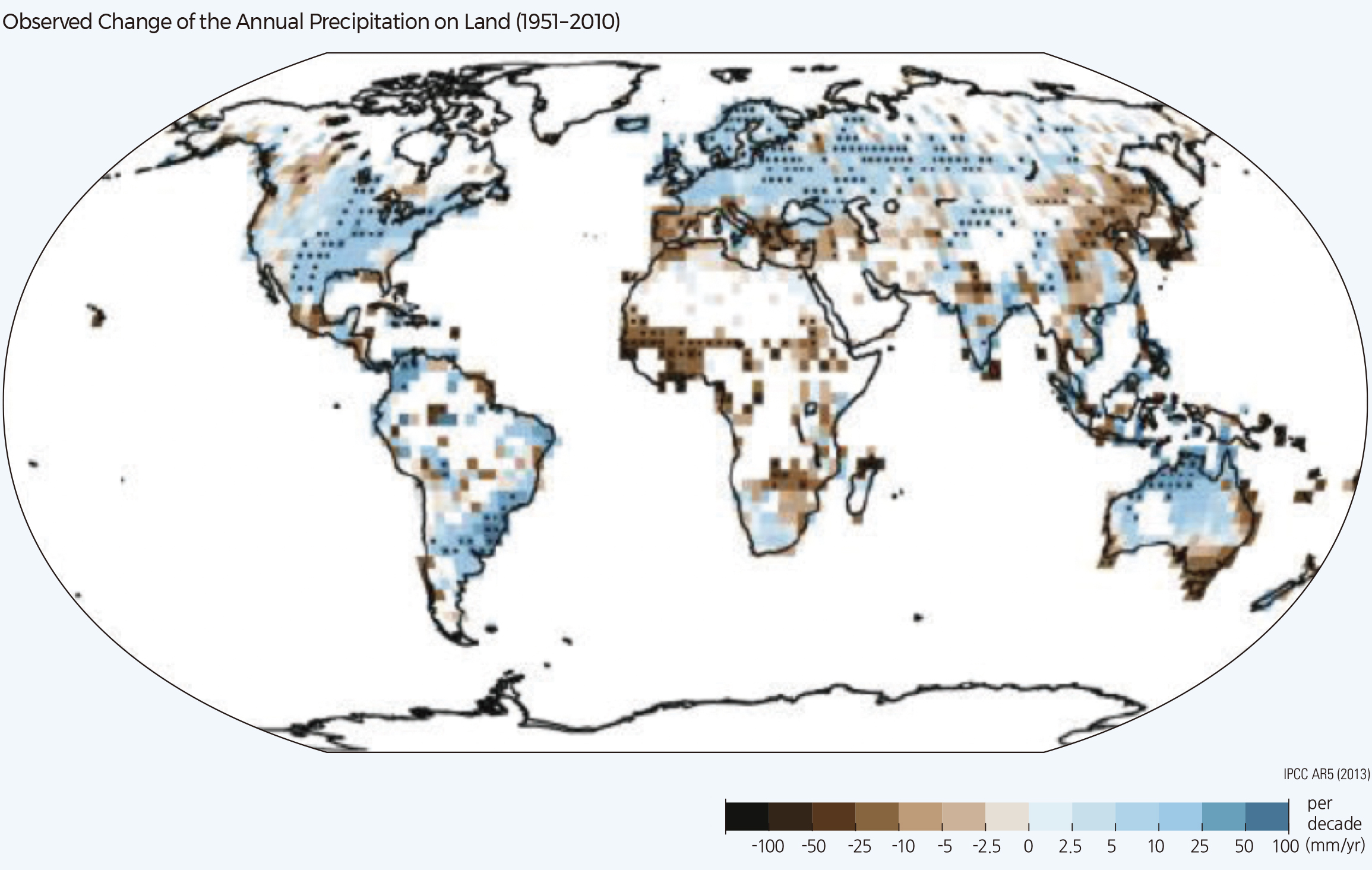English II 2020
The warming of all climate systems is obvious. The atmosphere and ocean have warmed, the amount of snow and glaciers has decreased, sea levels have risen, and greenhouse gas concentrations have increased. Many of the changes observed since 1950 have been unprecedented. The global average temperature has risen noticeably over the past 130 years (1880–2012) at a rate of change of 0.062±0.012°C/10 years. The warming trend includes several natural variabilities at various time scales, so the rate of temperature change varies with time period. The observed global average temperature over the 10 years of 2006–2015 is 0.87°C (0.75–0.99°C) higher than the average between 1850 and 1900, and the rate of temperature change has increased recently. The average temperature in Korea has risen noticeably at a rate of 0.18°C /10 years, based on the average of the six locations (Seoul, Incheon, Gangneung, Daegu, Busan, and Mokpo) where observation data existed for 106 years (1912–2017). The rate of change in the global average temperature (land) based during the same period was 0.14°C/10 years, showing a higher rate of temperature increase in Korea than the global average. The temperature rise is common throughout the Korean Peninsula but is more pronounced in the metropolitan area and inland areas.
It is difficult to identify trends in precipitation because it is highly volatile. Global precipitation on land increased from 1901 to 2008. However, the precipitation data show different precipitation patterns from 1951 to 2008, and the trend of increase is unclear. On the other hand, all precipitation data reveal an increase in precipitation in the mid-latitude (30–60°N) of the northern hemisphere, where Korea is located, during the periods 1901–2008 and 1951–2008. The increase in precipitation in the 1973–2012 period is relatively large compared to the 1913–2012 period. At other latitudes, the trend of long-term changes in precipitation is not clear.
When the global temperature rises by 1.5°C or 2.0°C compared to the pre-industrial period, the average temperature increases in most regions. On the other hand, the frequency and intensity of heavy rainfall and precipitation increase in some regions, while the frequency and intensity of drought also increase in other regions. Compared to the 1.5°C rises in the global temperature, the average temperature is expected to be higher in most continental regions, including East Asia, and 2–3 times higher than the global surface temperature in some regions, when the global temperature rises by 2.0°C.
Compared to the 1.5°C rises in the global temperature, the global precipitation is projected to increase further, and the risk from drought and lack of precipitation in some regions is projected to be higher, when the global temperature rises by 2.0°C. If the global average temperature rises by 1.5°C compared to the pre-industrial period (1861–1880), the monthly average, maximum, and minimum temperatures are expected to rise by 0.8°C (±0.11), 0.89°C (±0.16), and 0.91°C (±0.12), respectively, compared to the current period (2006–2015). These changes in temperatures in Korea are similar to the changes in global temperature. The increase in precipitation in Korea is expected to be slightly higher than the increase in global precipitation, resulting in an increase of 62.26 mm (±27.09).
If the global average temperature rises by 1.5°C compared to the pre-industrial period (1861–1880), it is predicted that the frequency of extreme, high temperatures will increase in most regions due to temperature rise, and the frequency of heavy rain and drought will increase in some regions. Such an increase in abnormal climate is expected to intensify as the global average temperature increases. The frequency of extreme temperatures is projected to increase more than the global average. When the global average temperature rises by 1.5°C or 2.0°C, extreme high temperatures in mid-latitudes, including the Korean Peninsula and East Asia, are expected to rise from 3°C to 4°C, respectively, and extreme low temperatures at high latitudes are expected to increase from 4.5°C to 6.9°C, respectively. The frequency of extreme hot days increases in most land areas and is projected to increase significantly in the tropics. |






